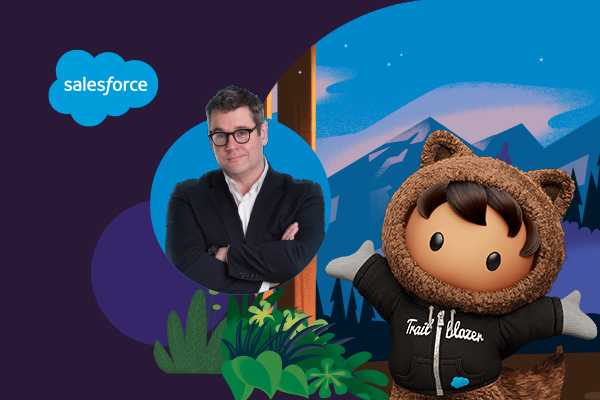What are the big issues keeping CMOs tossing and turning at night? Is it building their brand? Getting closer to their customers? Or getting their board’s attention?
Recently we brought together CMOs from some of the world’s leading brands to discuss what’s really on their minds at ‘Up at Night’, a virtual roundtable.
Led by Mark Ritson, Brand Consultant and Marketing Week columnist, and Salesforce’s own Sophie Crosby, SVP, Marketing Cloud, we dug deep into everything from the loss of brand visibility during the pandemic to the eternal tension between sales activation and long-term brand planning.
It was lively, it was opinionated, and it was inspiring. Here we bring you our top five insights from Mark.
1. History says now is the time to double down on your ad spend
Covid should be looked at almost as a recession. And viewing it in this sense, there’s a pattern. We have many data points going back 100 years showing that the smartest thing you can ever do is double down on your ad spend – at the very least you maintain it. Because so many of your competitors will pull back and cut. Your share of voice will go through the roof. You’ll see the impact it has on sales a little bit in the recession, but then in the immediate growth that happens after a recession, the brands that maintain their spend pick up 20 or 30 points of growth over the ones that pulled back. And it’s one of the most astonishingly clear patterns that you’ll ever see – Procter & Gamble are a brilliant example of this.
2. Focus on custom funnel metrics and sub-brand tracking
The brand challenge for CMOs has three spheres. You do a diagnosis to work out what's going on, you develop your marketing strategy and then there's the tactical execution. And they’re all roughly the same in terms of their importance. I see metrics very much as a strategic tool. Diagnosis is really not about measuring and re-measuring. It's really about understanding what's going on and tactics. I’d break them into the big two – decent funnel metrics (building a custom funnel) and sub-brand tracking (don’t go for a generic one, build your own in-house one).
3. The best CMOs are the board’s window onto the real world
The best CMOs in the last 12 months have been doing the old-fashioned thing of providing the rest of the board with a window on the market. I don't hear that talked about that much these days among CMO level people. The best thing about a good CMO is that she or he has access to the real world – not just the sales figures. They know what the customers are thinking and doing. It’s a missed opportunity not to delve into that. One of the best things to report on at board level is really good qualitative data in as a raw format as possible. It has this magical impact on C-Suite executives in my experience – because they rarely get to see consumers.
4. Good sales activation and long-term brand building must go hand in hand
We need to do really good sales activation, but the slower, more deliberate, more incremental line of brand building also has to be done. And it’s not about one being better than the other – you need these two together – and that’s the key point. Through no fault of your own, you’re trapped in a 12-month box – we never get to take the long-term view. ROI is a short-term metric, it's always been a short-term metric. The trick, in my experience, is to work out where you're comfortable as a CMO saying: ‘This is how much goes to long term brand building, this is how much goes to short term performance’ and split it at the start.
5. Brand salience over brand consistency
I think we’ve overrated consistency and it’s holding us back. I’m part of it. I think we've overrated it from a branding and marketing point of view for the last 20 years at the expense of performance. If I'm looking at touch points, am I doing them really well? And delivering really nicely is so important. And above that, and the thing you should have at the top of your agenda, is salience – the degree to which your brand is thought of or noticed. The most important thing for your brand is that you are salient to the customer when they are making buying choices. We've been looking at brand image, brand consistency, differentiation as the most important things. And typically, we've seen prominence and awareness as the gateway. I think that’s the wrong way around. The big challenge is salience.
At extraordinary times like these, when our minds are running overtime, it’s invaluable to chat to our peers and see that we share some of the same worries and hopes for the future.
The core challenge remains the same: in a world of short-term budgets, how do you prove to your board that long-term brand planning pays dividends? It was fascinating to hear what metrics and approaches can best help CMOs win those arguments.
For more about what the future of marketing holds, check out our Sixth State of Marketing Report - United Kingdom & Ireland.







